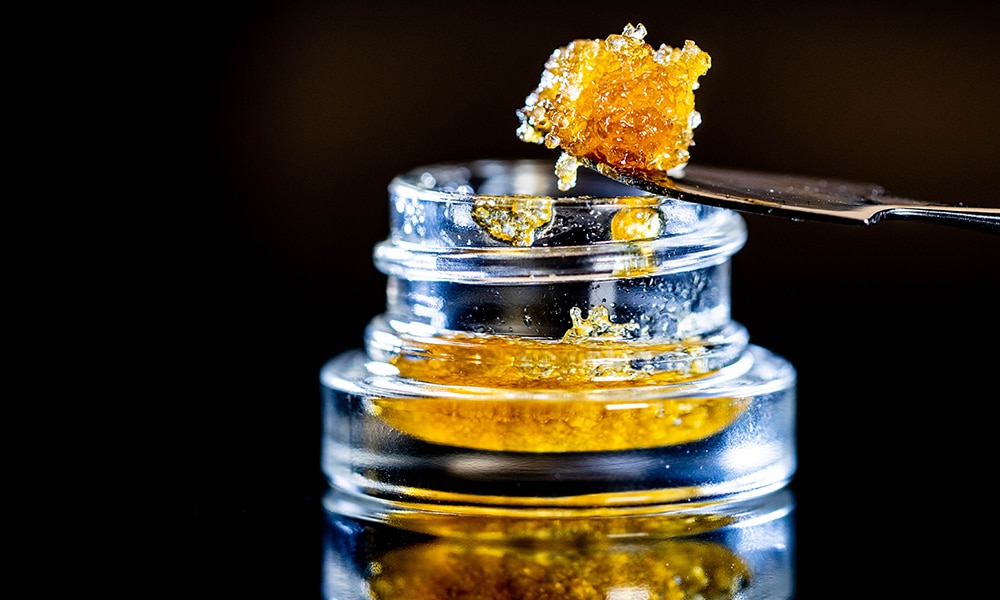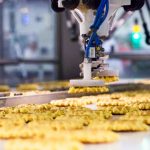Introduction
Introducing the cannabis extraction series by Cyntek. In this 9 part series, we will dive into multiple aspects of the cannabis extraction industry. The series begins with an in-depth analysis of the cannabis extracts market, including the overall size of the market, the anticipated growth of the industry, and an overview of the products that make up the market. The second part of the series will provide an overview of the cannabis plant, detailing the specifics of each component within the versatile cannabis plant and their respective value in cannabis concentrates. The third part of the series will provide a brief history of cannabis extraction processes and techniques used to isolate the desirable plant components. Parts 4-6 of the cannabis extraction series will provide an in-depth analysis of the “big 3” extraction solvents: CO2, ethanol, and hydrocarbons. In these parts, we provide insight into what makes each respective solvent appropriate for cannabis extraction, an overview of the processes followed, an introduction to some of the equipment used in each process, and the pros and cons of using each extraction solvent. Part 7 of the series provides an objective evaluation of the big 3 extraction solvents based on a number of different evaluation parameters. In part 8, we look at solventless extraction techniques that are utilized in both commercial and personal applications. Lastly, in part 9 we provide a peek into the future to look at novel extraction techniques and discuss where we believe the industry is going. Soooooo, let’s go. Vamos. Allez.
To navigate to other parts of this cannabis extraction series, follow the links below:
Part 2: Overview of Cannabis Plant
Part 3: History of Extraction Processes
Part 4: CO2 Extraction
Part 5: Ethanol Extraction
Part 6: Hydrocarbon Extraction
Part 7: Comparison of Common Solvents Used in Cannabis Extraction
Part 8: Solventless Extraction Techniques
Part 9: The Future of Cannabis Extraction
What are cannabis extracts?
Cannabis oils, concentrates, and extracts are umbrella terms used for a wide array of cannabis products that are derived from cannabis flower which has been processed into a concentrated form to contain desirable components of the cannabis plant. The most common forms of cannabis concentrates include edibles, hash, tinctures, and oils, however, any product that is derived from cannabis and developed by a cannabis chemist can be considered a cannabis concentrate. Cannabis concentrates can be vaporized, ingested orally, or applied to the skin (topically), and often offer a healthier way of dosing.
Common types of cannabis concentrates
Oils
Usage: Ingested orally
Description: A cannabis-infused liquid taken sublingually with effects occurring 20-30 minutes after consumption.
How it’s Made: Cannabis oils are made using an extraction process that uses a solvent to dissolve cannabinoids (THC, CBD, etc.) as well as terpenes from the plant material. Depending on the solvent used, some post-processing may be required to remove fats and waxes from the extract. Cannabis oils can be full-spectrum, meaning they include a mixture of cannabinoids and terpenes, or they can be composed of an isolated cannabinoid (CBD, THC, etc.). Full-spectrum oil offers what is known as the entourage effect, which means a different physical or psychological effect is experienced than when ingesting a single cannabis compound on its own. CBD or THC oil has been subjected to additional post-processing techniques to isolate the desired compound. CBD is widely regarded as having a medicinal benefit, while THC is responsible for the psychoactive “high” experienced when using cannabis. Typically, the high potency extract is mixed with a carrier oil such as Medium Chain Triglyceride (MCT) to lower the cannabinoid concentration.
Tinctures
Usage: Ingested orally
Description: A cannabis-infused liquid taken sublingually with effects occurring 20-30 minutes after consumption.
How it’s Made: Tinctures are produced similarly to cannabis oils with one minor variation. With cannabis oils, solvents such as ethanol, CO2, or butane are used to dissolve cannabinoids and terpenes from the plant material which are removed from the final product following extraction. Tinctures are made by using alcohol as the extraction solvent, however, the alcohol isn’t removed from the final product. When making tinctures, the cannabis flower must be “activated” using a process known as decarboxylation. When looking at the molecular structure of cannabis components, the cannabinoids in cannabis flower naturally contain an extra carboxyl ring or group attached to their chain. The presence of the additional carboxyl ring means the well-known cannabinoid THC, is actually not present in the flower in high quantities, and in its place there is THCA. THCA doesn’t provide any psychoactive effects because the larger molecule doesn’t fit into human cannabinoid receptors. Decarboxylation is the process of applying heat and light to convert THCA molecules into their psychoactive counterpart, THC. This is what happens when you burn cannabis that is smoked using a pipe or a joint. Once the cannabis flower has been decarboxylated it is mixed with alcohol for a specified amount of time to dissolve the cannabinoids and terpenes. The ground cannabis material is then filtered out of the alcohol mixture, leaving a solution of alcohol, cannabinoids, and terpenes.
Capsules
Usage: Ingested orally
Description: Capsules are filled with cannabis oil (described above) and provide a slow-release format of the previously described oil. The full effect won’t be experienced for up to 2 hours.
How it’s Made: Capsules filled with cannabis oil are made using the same process described above. The primary difference is that instead of filling bottles or droppers with cannabis oil, the oil is injected into capsules. The oil used to fill the capsules may or may not use a carrier oil depending on the target potency.
Vaporizer Cartridge
Usage: Vaporized
Description: Vaporizer cartridges are filled with cannabis oil and attached to a battery, similar to an e-cigarette. The battery is activated either by puffing slowly on the tip of the cartridge or by pressing a button on the vaporizer. The effects of vaporizing cannabis oil are felt within minutes.
How it’s Made: Vaporizer cartridges come in many formats. They can be filled with full-spectrum cannabis oil or oil that has undergone further post-processing such as distillation. Distillation is the process of further reducing the cannabis oil, such that the concentration of the desired cannabinoid (typically THC or CBD) is above 80% of the total weight. Similarly to capsules, the vaporizer cartridges will not contain any carrier oil.
Hash
Usage: Vaporized, dabbed, or smoked
Description: A pressed concentrate of the cannabis plants sticky glands (trichomes). When vaporized, dabbed, or smoked the effects will be felt within minutes.
How it’s Made: Hash can be made in a number of different ways. The most commonly used methods for converting cannabis flower into hash are dry sifting and through the use of ice water or dry ice. The dry sifting process entails using multiple different sized screens (sieves) where each successive screen is a smaller micron size. As the ground plant material passes each successive sieve, more and more contaminants are removed from the plant material until at the last stage the remaining material is composed primarily of the resinous trichomes. The other commonly used method for making hash entails using ice water to create a product known as bubble hash. Similar to the dry sifting method, the process used to make bubble hash employes different sized micron filters, however, the plant material is mixed with ice-cold water and is agitated (stirred) to allow the trichomes to be removed from the plant material. The use of ice-water works because cannabis is not water-soluble, meaning it will not dissolve in the ice water solution. The method utilizes the difference in density and weight between the trichome glands and the remaining plant material to isolate the trichome glands. The trichomes will sink in the ice water while the remaining plant material will float. The trichomes will pass through the first filter and can be collected and dried from the smaller micron filter. Another method used to make hash is through the use of dry ice which employs the same principles as bubble hash but instead of the ice water, dry ice is used. The product made using this method is commonly referred to as dry ice hash.
Shatter, Wax, Dabbable Oils
Usage: Vaporized or smoked
Description: Shatter, wax, budder, and dababble oils are refined cannabis products with high potency. The effects are felt instantly when vaporized or smoked.
How it’s Made: Shatter, budder, and dababble oils are all derived from cannabis oils, typically extracted using a hydrocarbon solvent such as butane or propane. The process used to produce these extracts are very similar to the cannabis oils, described above, with slight variations in the post-processing techniques used. For instance, budder, a wax-concentrate variety, is made when the extracted cannabinoids begin to crystalize after being agitated during the extraction process. The extracted cannabinoids are whipped after the residual solvent is purged from the extract to create a fluffy concentrate. The process used to make shatter is almost identical to that of budder varieties, however, the oil isn’t agitated which allows the extract to harden into a brittle format.
Extracts Market
Now that we’ve introduced what cannabis extracts are, and how they are made, we can provide an overview of the current market size and estimates of the industries compounded annual growth rate. In a report assembled by Grand View Research, the global cannabis extract market size was estimated to be valued at USD 7.3 billion in 2019. This represents an increase of USD 4.2 billion over the span of three years from 2016 to 2019. The market is expected to continue its rapid growth with an anticipated CAGR of 16.6% from 2019 to 2027. At the anticipated growth rate, the global cannabis extract market size will reach ~USD 25 billion by 2027. The growth of the global cannabis extract market is summarized in the figure shown below.
The study also breaks down the market by product type, and extract type. Their distinction between product and extract type is based on the delivery method (product type), and the type of cannabinoids, such as full-spectrum or isolated THC, CBD, etc. (extract type). The study only covers two broad categories of product type, oils, and tinctures. It is assumed that the remaining products discussed above are encompassed by one of the two broader categories. Given this distinction, Grand View Research estimates that the oil segment makes up a larger percentage of the total market size, valued at USD 4.8 billion in 2019, and is anticipated to experience an increased CAGR in comparison with tinctures. The tincture segment makes up the remaining USD 2.5 billion in 2019 and is anticipated to grow at a CAGR of 14.5%. The study covers two different extract types: full-spectrum, and isolates, defined within the report as having a concentration of greater than 80% of a given cannabinoid. The market for full-spectrum extracts was USD 4.3 billion in 2019 and is anticipated to register a CAGR of 20.0% over the forecast period with the remaining USD 3.0 billion encompassing isolates.
The study also looks at the geographical distribution of the global cannabis extracts market, which is currently dominated by North America, valued at USD 6.4 billion. This is not surprising given the wave of legalization in Canada and many American states. Europe accounted for the second largest portion of the total market, followed by Latin America, Asia Pacific, and lastly the Middle East and Africa.
As shown in the Grand View Research report, the global market for cannabis extracts shows no signs of slowing down. As more countries and states begin to favor medicinal and recreational legalization, it would not be surprising if their adoption accelerated.
Thanks for reading this overview of cannabis extracts. Stay tuned for Part 2 of the Cyntek Cannabis Extraction Series, where we dive deeper into the anatomy of the cannabis plant.




